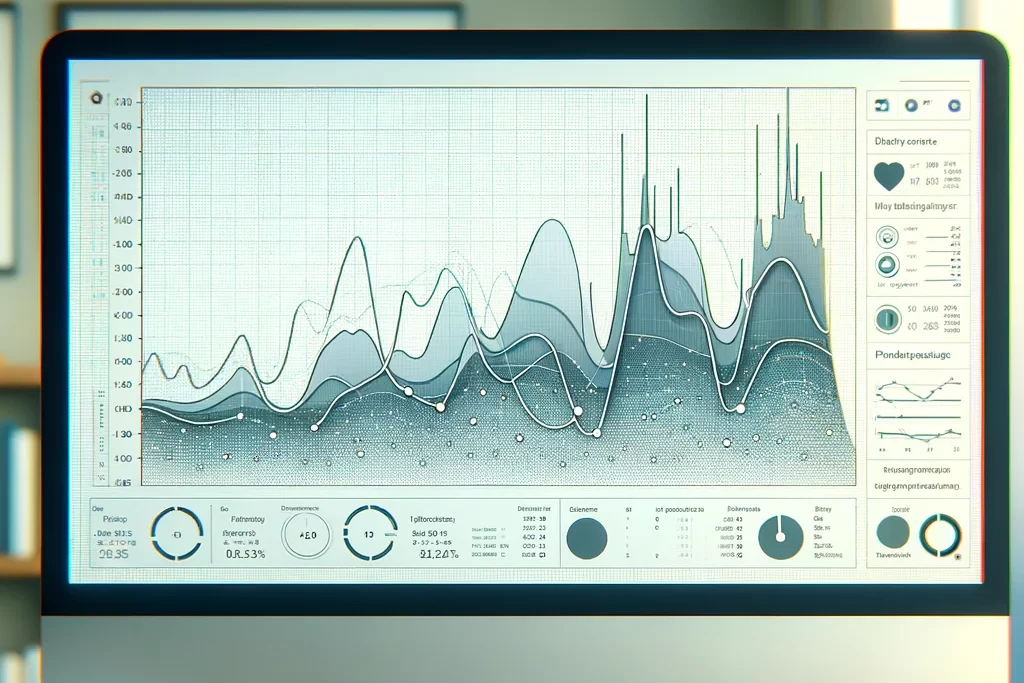Forecasting in digital analytics is akin to having a crystal ball that reveals glimpses of the future, empowering businesses to make proactive decisions. As digital landscapes evolve at an unprecedented rate, harnessing the power of forecasting models is no longer just an advantage—it’s a necessity. This comprehensive blog will help demystify the most common forecasting models and their applications in digital analytics.
Time-Series Analysis: Forecasting with Temporal Precision
Time-series analysis is a traditional but powerful method utilized in forecasting. By examining how variables change over time, businesses can identify patterns and trends that inform future projections. Here’s how time-series models can become an integral part of your digital strategy:
- Seasonal Trend Analysis: For businesses with observable seasonal patterns, like e-commerce sites experiencing holiday sales peaks, seasonal trend analysis can predict fluctuations and guide inventory planning.
- Moving Averages: Useful for smoothing out short-term fluctuations and highlighting longer-term trends in website traffic or online sales data.
- Exponential Smoothing: This model gives more weight to recent observations and is adept at forecasting data with less historical information or when data exhibits a non-linear pattern.
Regression Models: Understanding Relationships between Variables
At the heart of forecasting lies regression analysis, which assesses the relationship between dependent and independent variables. Regression models can offer profound insights, especially when it comes to:
- Marketing Spend Allocation: By understanding how different marketing channels impact your KPIs, you can allocate your budget effectively to maximise ROI.
- Customer Lifetime Value Prediction: Regression models can help project the future value a customer brings, shaping your customer retention strategies.
- Conversion Rate Optimisation: Analyse which website elements correlate with higher conversion rates and prioritise those for A/B testing and optimisation.
Machine Learning Models: The Future of Data Analysis
Machine learning models are revolutionizing forecasting with their ability to process vast datasets and complex relationships. These models stand out for their:
- Predictive Accuracy: Machine learning algorithms can outperform traditional models in predicting user behaviour, sales trends, and other key business metrics.
- Automation and Scale: Automating the forecasting process with machine learning allows for handling large-scale datasets efficiently.
- Personalisation: Machine learning can understand individual user patterns, enabling hyper-personalisation in marketing efforts.
Econometric Models: Economics Meets Analytics
Econometric models incorporate economic theories and principles into the forecasting process. These models are particularly relevant for:
- Market Demand Analysis: By taking into account economic indicators and consumer behaviour, econometric models can forecast the demand for your products.
- Price Elasticity of Demand: Understanding how changes in pricing affect sales volume is crucial for revenue management and can be analysed with these models.
Hybrid Models: Blending Techniques for Enhanced Accuracy
In practice, no single forecasting model provides all the answers. Hybrid models, which combine features from various forecasting methods, often yield the most reliable results. For instance:
- Combining time-series analysis with regression models to cover both temporal and relational aspects of data.
- Integrating machine learning with traditional statistical methods to cater to both interpretability and predictive power.

Conclusion: Shaping the Future with Data-Driven Foresight
In conclusion, the use of forecasting models in digital analytics is indispensable for businesses looking to navigate the uncertainties of digital markets. From classical statistical methods to innovative machine learning techniques, the right forecasting model can convert raw data into a strategic roadmap for success.
Are you ready to transform your digital analytics with these forecasting models? Embrace the predictive power they offer, and position your business to anticipate changes, seize opportunities, and drive competitive advantage.
Unlock the full potential of your data with Tatitech’s predictive analytics services. Leveraging the power of Google Analytics, our team specializes in transforming your historical data into forward-looking insights that can predict trends and user behaviour. By understanding what your data suggests about future outcomes, we can help you make proactive decisions that drive increased efficiency and competitive advantage. Contact Tatitech today to discover how predictive analytics can elevate your strategic initiatives and enhance your business performance. Let us help you anticipate the future and stay ahead in your industry. – See all our services